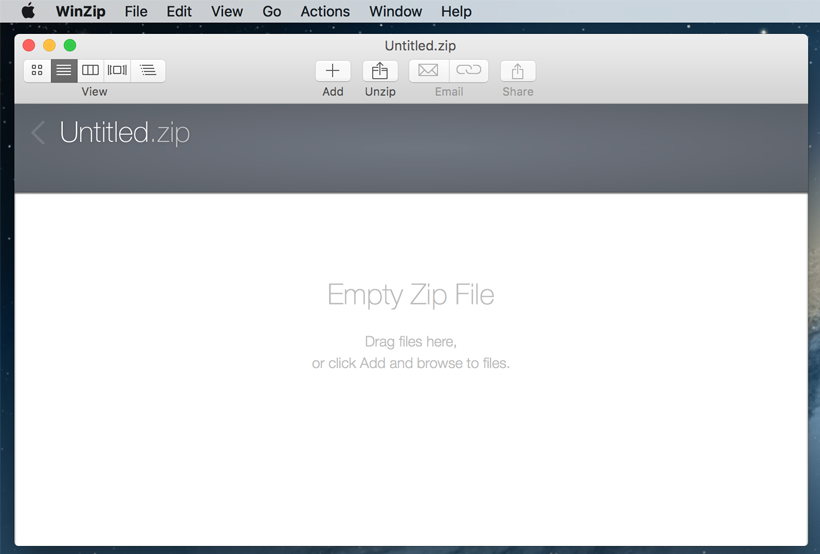
- #Bulk unzip winzip for mac how to
- #Bulk unzip winzip for mac zip file
- #Bulk unzip winzip for mac mac
#Bulk unzip winzip for mac mac
To do this, open Spotlight on your Mac (Command+Space), and search for “Archive Utility.
#Bulk unzip winzip for mac how to
How to Change Archive Utility SettingsĮven though Archive Utility has no visible UI, you can change some of its settings.
#Bulk unzip winzip for mac zip file
If it was a single file, you’ll see that the file will return to its original state, with the name intact. If you are decompressing a folder or a Zip file that contained multiple files, it will show up as a folder with the same name as the archive. After several seconds, the file or the folder will decompress in the same folder. Navigate to the archive in the Finder app and double-click the Zip file. Cisdem Unarchiver is the unarchiver and archiver for Mac, which allows users to batch compress files, preview the contents inside archives and unzip (entirely. It doesn’t matter if it’s a Zip file that you downloaded on the internet or something that you compressed yourself.

You can now move the compressed Zip file to another folder or send it along as an email attachment. RELATED: The Fastest Ways to Rename Files on macOS If you compressed multiple files, you’ll see a new file with the name “Archive.zip.” You should rename the file to make it easier to find. If you compressed a single file or folder, the archive will carry the same name, with a “.zip” extension. Once the compression process is finished, you’ll see a new compressed file in the same folder. If you’re using multiple files, the Compress option will also show you how many files you’ve selected. Its easy to instantly convert a LZH, LHA, RAR, 7Z, TAR, Z, GZ, TAZ, TGZ, BZ, XZ or Z. If you’re looking for additional options, you can try the Zip Extractor or Archive Extractor extensions.Once you’ve made the selection, right-click on it to view the context menu. Here, click the “Compress” option. Open and convert content from a wide selection of industry-standard compression file types using WinZip Mac 9. That’s all there is to zipping and unzipping compressed files on your Chromebook. Then, click the “Eject button” next to the name of the archived file that’s mounted in the Files app. To close the zipped file, you need to unmount it like you would any external drive plugged into your Chromebook. Or, depending on the file type, open them in a certain app. Once it’s open, you can select and copy the files in the archive to put them in a different location. But all you need to do to open it is to double-click on it. Chrome OS mounts the archived file like a drive inside the Files app. If someone emails you a zipped or compressed file (including RAR), or you want to open your own archived files, you can.

You can right-click the archive file to rename it or choose other options like sending it off or copying it to put it in a different location. You will need to change the name of your zipped files based on the naming convention you employ on your system. The zip file will be created in the folder you’re in and named “Archive” by default. Or, use the key combo Ctrl + A to select everything in the folder.Īfter you have all the files you want, right-click on the selected files and choose “Zip selection” from the context menu. Or, just like Windows, you can hold down Shift to select multiple items at once. Next, hold down the Ctrl key and click each file you want to add to your zip folder. Then head to the folder with the pictures, documents, or other files you want to zip up. To create a zip file, open your Files app. But what about using zip files on a Chromebook? Here is a look at how you can zip or unzip files on your Chromebook with Chrome OS without using any third-party apps.


 0 kommentar(er)
0 kommentar(er)
